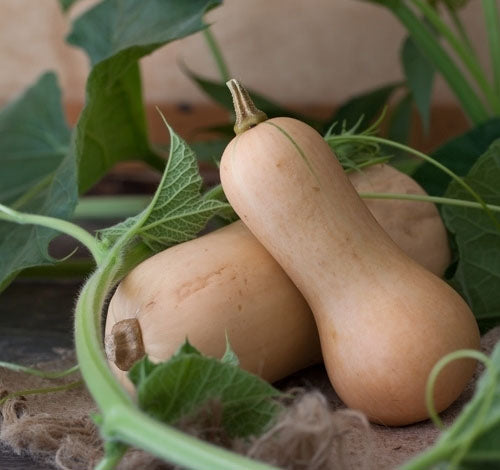Smoot's Farm
Seeds Squash Winter Butternut Waltham Cucurbita moschata Open Pollinated Heirloom 20 Seeds
Seeds Squash Winter Butternut Waltham Cucurbita moschata Open Pollinated Heirloom 20 Seeds
Couldn't load pickup availability
Squash Winter Butternut Waltham Cucurbita moschata Open Pollinated Heirloom 20 Seeds
Non-GMO - US grown - Open-pollinated - Untreated
Flat Rate Shipping However Many Packs of Seeds Ordered.
Also Free Shipping on seeds when combine with any item in our Store. If you shipping is not
Adjusted at check out a refund for the difference will be sent when we process the order.
We are a licensed plant and seed dealer located in Middle Georgia.
Please contact us with any questions or concerns.
Thank you for stopping by ~ Follow Smoot's Farms on other social media platforms!
____________________
Waltham Butternut is the most popular butternut - it has a more uniform shape and size with fewer crook necks, as well as better interior texture and color than older varieties! These squashes take about 100 days to be 12" long and weigh 5 pounds. This variety is easy to grow and has high yields that can be stored away for the winter.
Sowing: Gardeners with short growing seasons may want to start their Waltham Butternut squash seeds indoors a month before the last expected frost. Since squashes do not take well to transplanting, peat pots are the best option. Plant two seeds per pot, later clipping off the weaker seedling. Harden the seedlings by exposing them to the weather for several hours at a time during the week before transplanting. About a week after the last frost or when the soil temperature reaches an average of 60 degrees F, plant the seedlings in very rich soil 8-10' apart in rows 10-12' apart. Another option is to plant the seedlings in hills of two, 8-10' apart. To direct sow, plant the seeds a week after frost 1/2" deep, 3-4' apart and thin to 8-10' apart. For companion planting benefits, plant winter squash seeds along with corn but avoid planting them with potatoes.
Growing: Since squash seedlings do not tolerate frost, provide protective coverings if cold weather threatens. Keep the soil moist at all times, but avoid getting the leaves wet as this can cause diseases such as rot or mildew. When the vines begin to develop, a layer of mulch will help conserve moisture and control weeds; mulch also will keep the squashes clean and protect them from too much soil contact. By midsummer, pinch off all the blooms to concentrate the plant's energy on the developing squashes. Waltham Butternut resists the squash borer.
Harvesting: Squashes can be harvested as soon as the stem begins to dry and the skin becomes too hard to pierce with a fingernail. Because cold weather can damage squashes, they should be harvested before the first frost. Cut the stem with a sharp knife, leaving a 2-3" length." Do not carry the squash by the stem; if the stem breaks off, use it as soon as possible, since this causes the squash to deteriorate quickly. Cure the squashes in the sun or a dry location until the stem shrivels; do not wash the ones you intend to store. Waltham Butternut can be harvested while young as a summer squash in addition to being harvested when it reaches its full maturity; this squash stores very well and is one of the most popular squashes for baking.
Share


